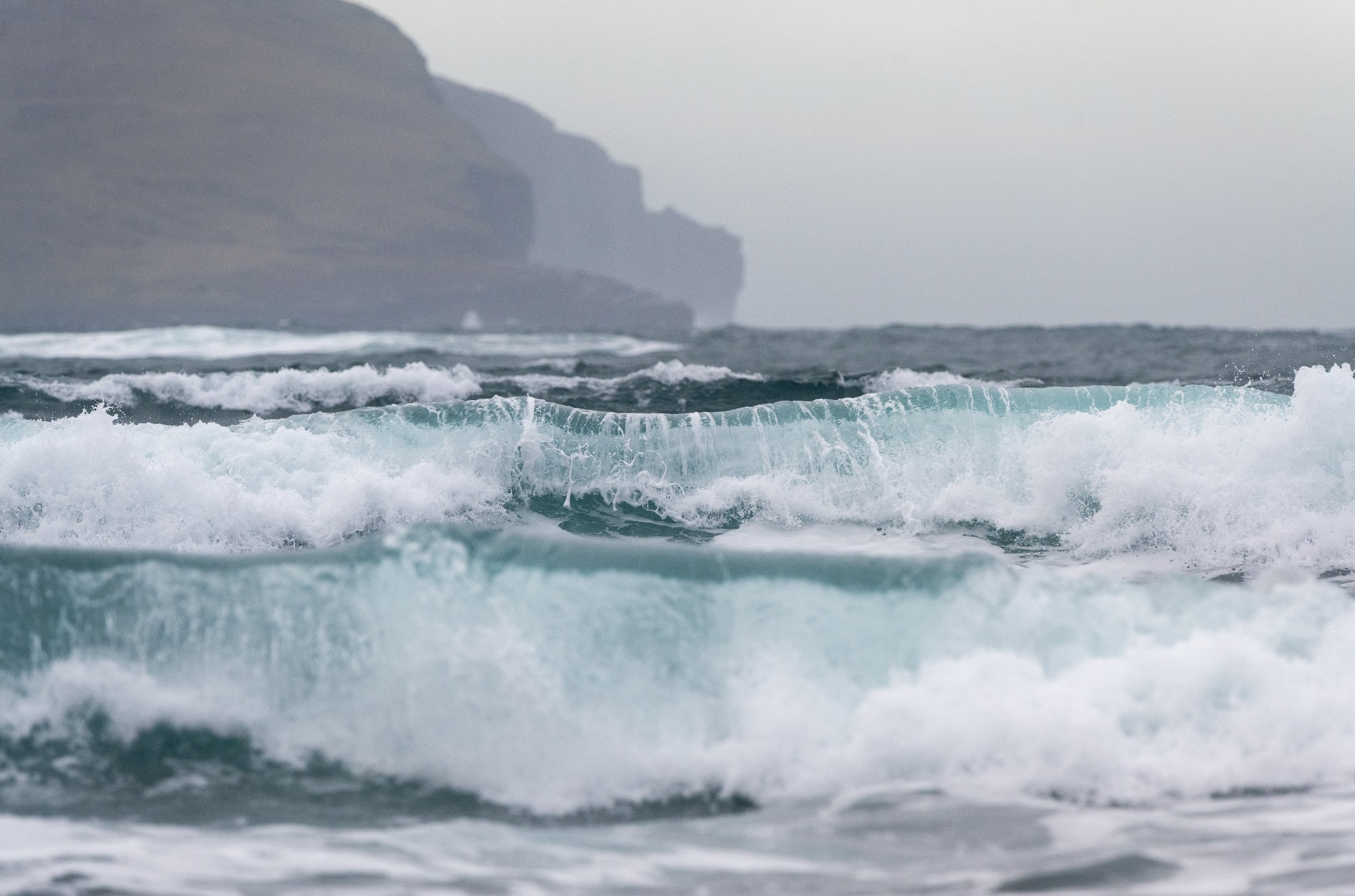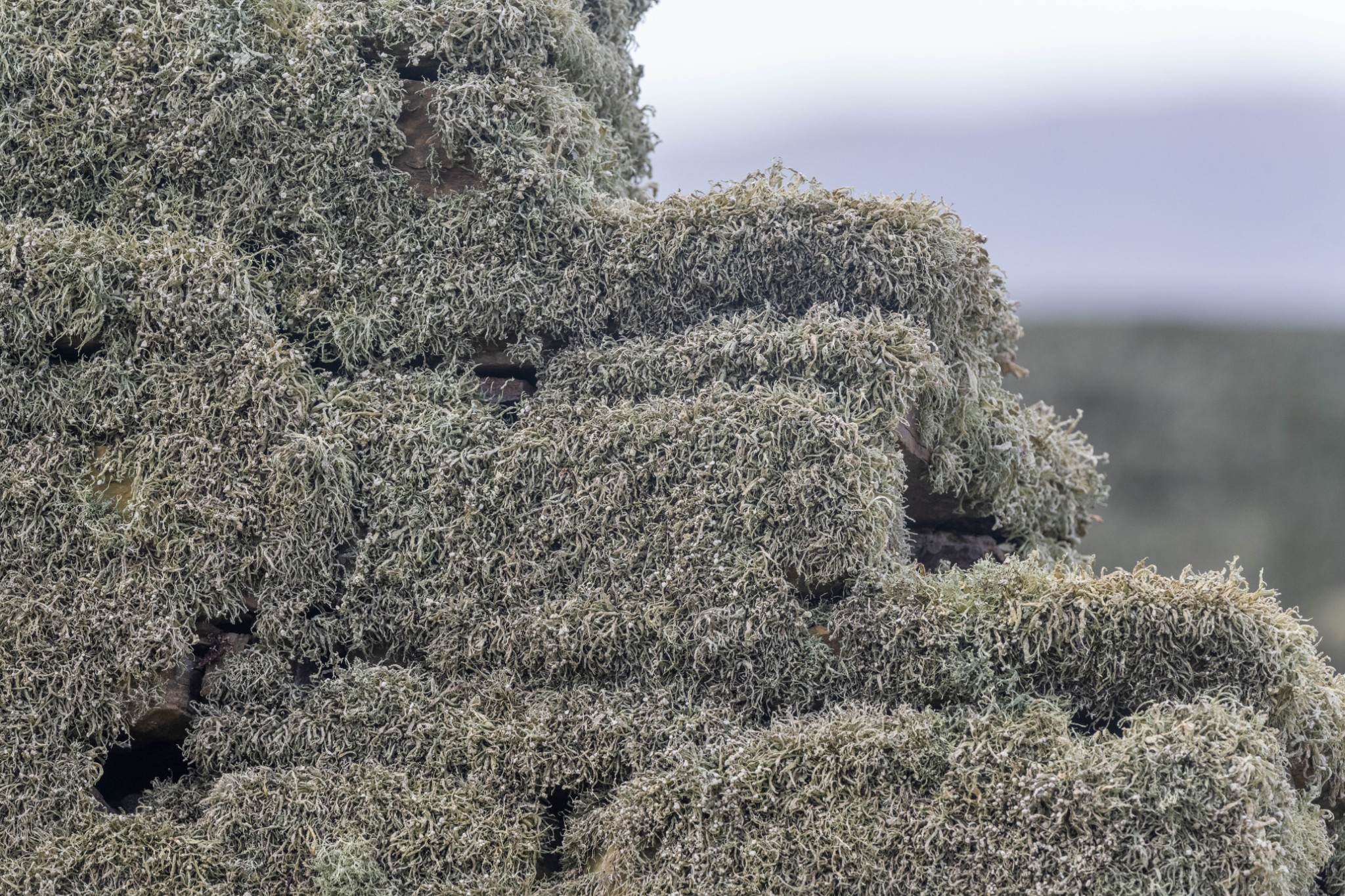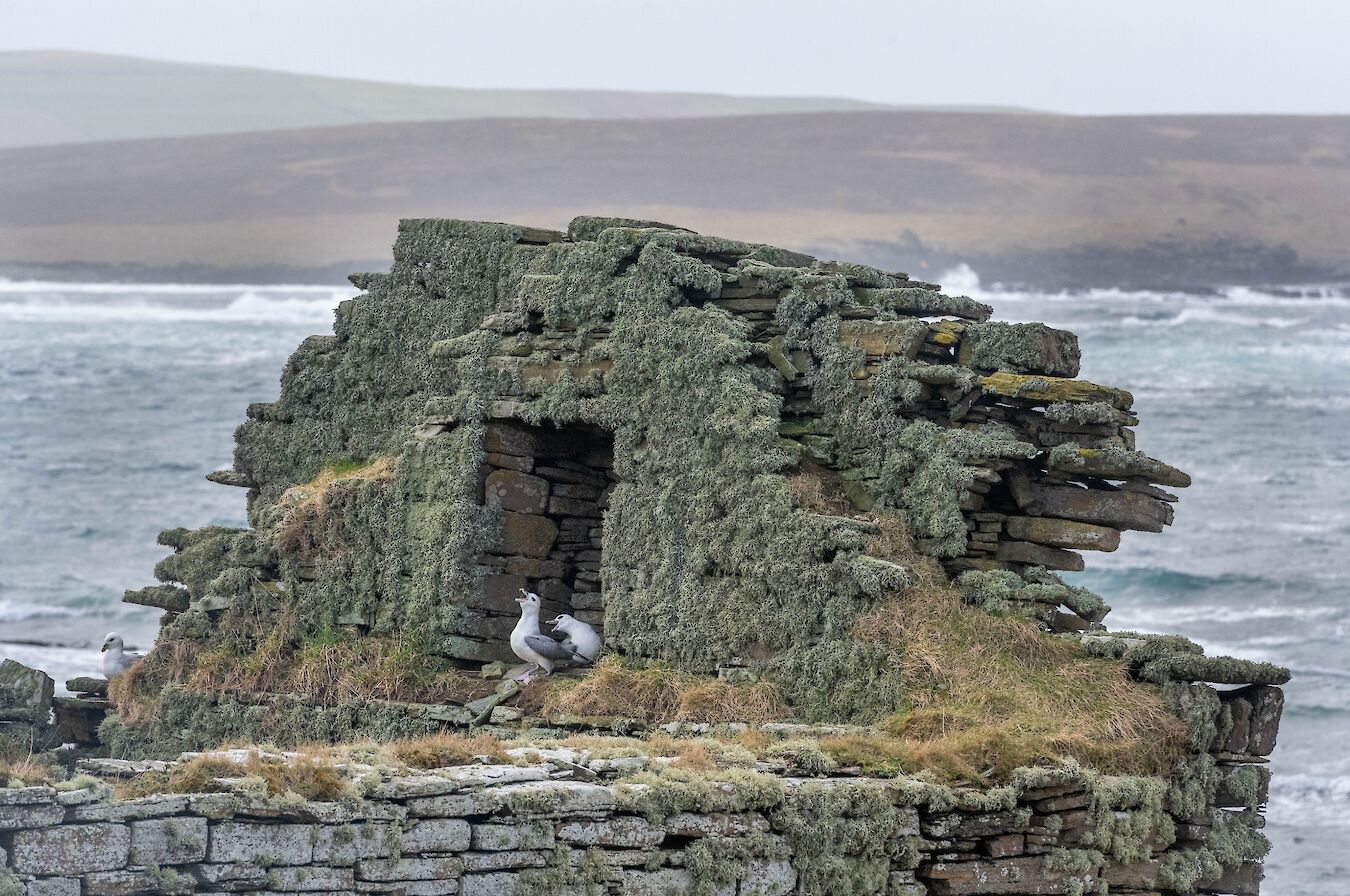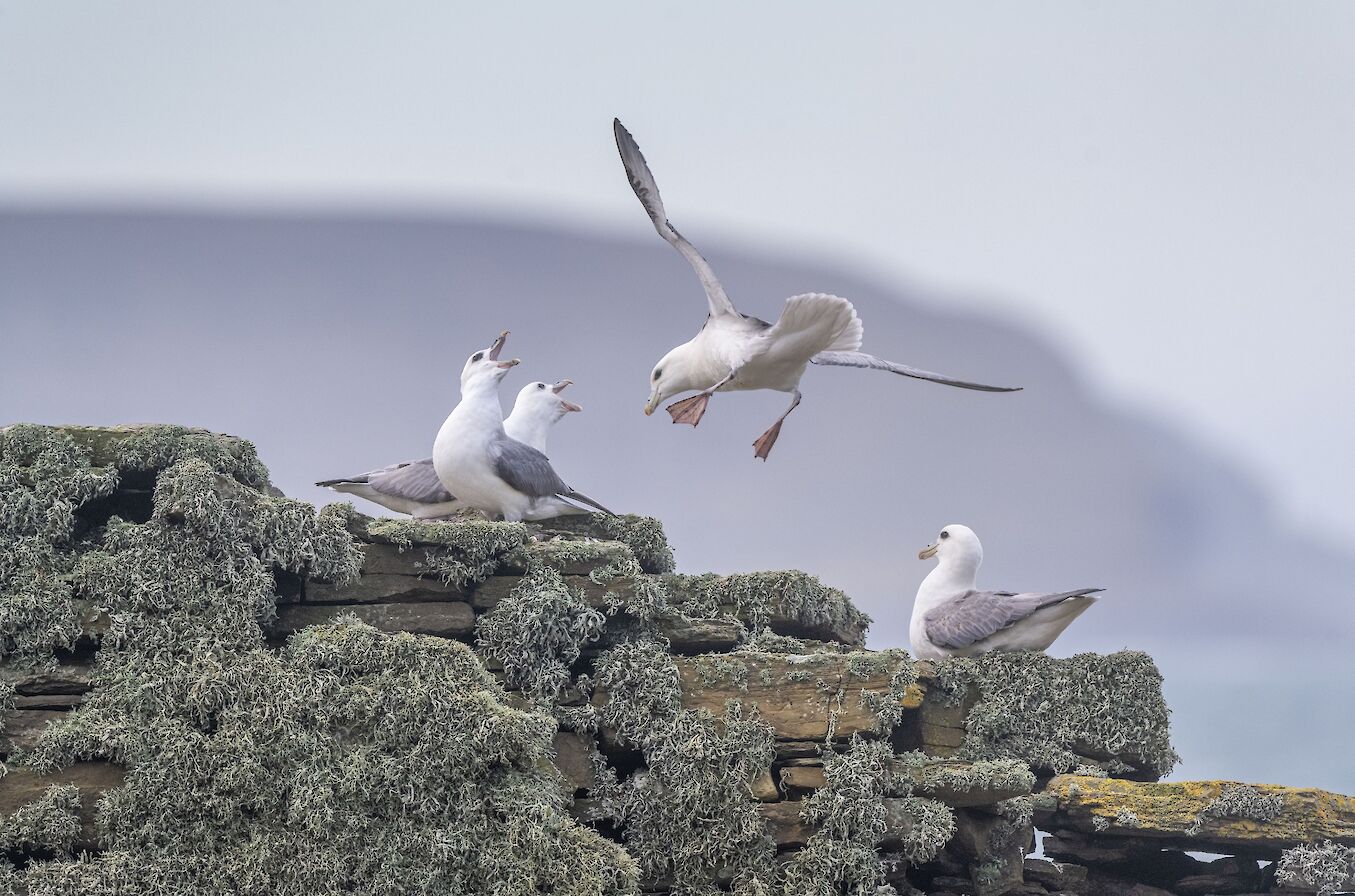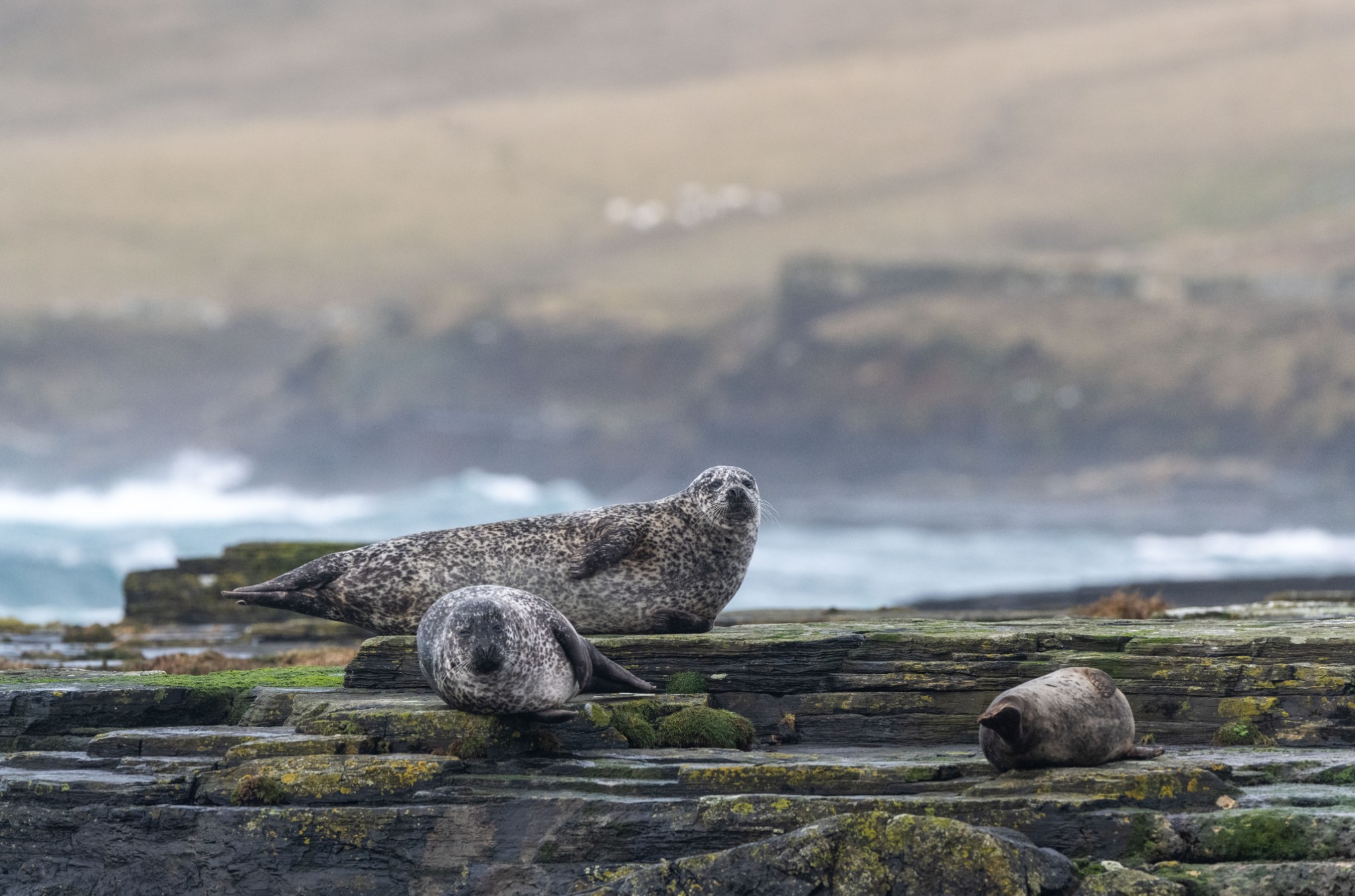Since last month’s article, we had something of a whiteout. With nearly constant north winds in March the fields and hills of Orkney were blanketed with snow.
I couldn’t help feeling like I had photographed the mountain hares of Hoy too soon. Lamenting that they stick out like sore thumbs against the dark heather whilst in their winter pelage, they must have looked beautiful in the drifts.
You can only be in one place at a time though. I find part of the challenge of being a wildlife photographer is remaining focused enough on the projects I’ve started and putting enough time in to hopefully achieve what I set out to do, but also being flexible enough to take advantage of opportunistic ‘events’ when they happen.
I’m an enthusiastic list writer; things I’ve seen, what I hope to see, projects to start, projects to finish. On one of those lists are the various islands that make up Orkney, mostly the ones I’ve spent less time on and the ones I’ve still to set foot on. I feel almost ashamed to say that I’ve yet to go to Wyre or Egilsay and yet I’ve been on some of the remoter islands like Eynhallow, Copinsay and Swona.
One island I’ve resolved to spend more time on is Rousay and recently I had the chance to spend a few days there. With large tracts of moorland fringed by farmland and lochs, it’s the kind of place you just see ‘stuff’ simply by driving around. It didn’t take much effort to see both hen harrier and sparrowhawk flying by as I made my way along the south of the island towards Scabra Head.
As I park up high on the road, I can see Midhowe Broch on the coast below. Midhowe Broch was built around the 1st century AD and lived in by a powerful local family. As I make my way down the rather steep sided fields towards it, I can hear the inevitable ‘honking’ of a group of greylag geese, now as much a part of the Orkney landscape as the sheep that scatter down the hill before me.
There is such a wealth of archaeological interest here that I have a choice to make. Turn left towards the Skaill Farm complex, or right towards the broch. I won’t lie, I’m not much of an archaeologist but you get a feeling right away that this stretch of coast has been an important place for people through the centuries. I’ll direct you to the excellent UHI Archaeology Institute website if you wish to dig a little deeper into the history of this area.
What I’m really interested in of course is the wildlife that might be found here. I take a left and what I’m immediately struck by is the profusion of Ramalina siliquosa lichen on the dykes and stones as I make my way towards St Mary’s Kirk. A beautiful pale green colour, this tufty, stringy lichen covers some of the Kirk to such an extent that the structure beneath is unrecognisable.
Its preferred conditions are said to be ’in areas subject to maritime influence’ and it certainly has that here. I’ve not been here long but can already feel the influence of salt on my skin. Ramalina is of course is very tolerant of sea spray.
Resting on the top of the Kirk are a group of three fulmars, one of my favourite birds. The combination of thick lichen and fulmars looks amazing and I can see that there are some interesting images to be had. I use a 70-200mm lens take a more general view of the scene but when I change to my 500mm this is what really gets my juices going!
The birds suddenly come alive as others attempt to join them. Necks outstretched, they cackle in the way only fulmars can whilst the others float effortlessly above them. They make micro adjustments, their stiff wings adapted for gliding at sea fluttering gently as they drop towards the Kirk. What helps this scene photographically is Costa Head on the mainland appearing prominently in the background. It gives a real sense of depth and helps make the fulmars stand out even more.
I put down my camera and decide this is as good a place as any to have lunch. I’m joined by a wren, its sharp song resplendent in the still chilly air. The gaps in these lichen clad walls will be the perfect nesting place for wrens. If I came back here in a month’s time, I’m sure this coast would be home to a number of wheatears too, such is their liking for dry stone dykes.
I leave the fulmars to their neighbourhood dispute and look over the wall towards the wild expanse of Eynhallow Sound. I feel blessed, as not only is one of my favourite birds here but I see one of my favourite mammals too, the harbour seal. In fact, there’s not just one, but a group of twelve hauled out on the black flat slabs. I can’t help it and say under hushed tones ‘hello selkie’.
An individual is further along the shore and seems adamant that it isn’t going to move from the spot it has clearly found comfortable. The tide has other ideas however and with each growing wave that hits it, the seal won’t have a say as to whether it stays or not. Great globs of white froth engulf it and soon it slides effortlessly into the sea.
The bigger group however have hauled out higher up and are fast asleep. Well, I say fast asleep, but harbour seals seem to be able to be dozing and highly alert at the same time!
The majority here are females and last year’s pups but there are two bigger looking individuals hauled out together, two males or ‘bulls’. It’s not always that easy to tell males and females apart, especially if they are wet, or half dried. The way I like to think of it is the difference in appearance between male and female Labradors - the males always have a heavier-looking face and the female is slenderer. Get a good look at a mature bull harbour seal and you’ll notice the heavier, rounder face. He’s also roughly 25% bigger than the female and as result can weigh up to 80kg compared the females 60kg.
What isn’t disputed between the two however is the beauty of their pelage. They range in colour from brown to charcoal grey. When wet their fur is a stunning mottled grey and silver.
The wind is picking up and the tide changing. Waves start crashing in seemingly open water between Rousay and Eynhallow, the spray beautifully backlit by the setting sun. A reef must be hidden just below the surface, the Atlantic swell finally forced to rest.
A selkie follows me as I walk along the coast and I ask it questions as I walk. I can’t explain it but there feels a kinship of sorts between us. Fanciful perhaps on my part.
Waves, fulmars and selkies, this is my kind of place. The passing of time is so evident here such is the dominance of the Midhowe Broch to the square tower of ‘the Wirk’ and Skaill Farm. Yet I realise that I haven’t been paying time any attention at all. Six hours have come and gone and I’ve become lost in the joy of just being here, conversing with the selkies in the wilderness of Eynhallow Sound.
For more details on where and how to see Orkney’s selkies, take a look at the excellent new book ‘Orkney Pocket Book of Selkies’ by Tim Dean.
Find out more about Raymond’s work via his official website. You can also find him on Facebook, Twitter and Instagram.
